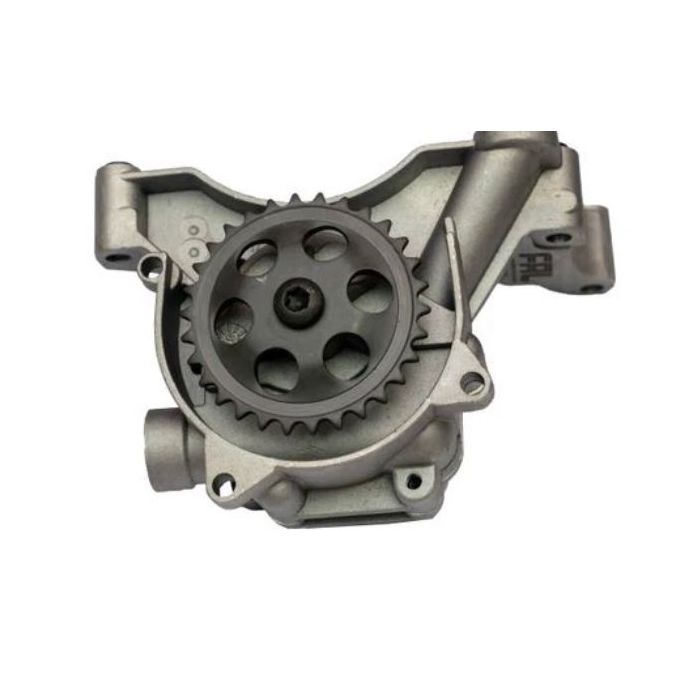Install a state-of-the-art clp engine for better performance.
Exactly How a Clp Engine Can Enhance Efficiency in Numerous Industries
The introduction of CLP engines marks a significant change in functional effectiveness across numerous industries, driven by their capability to maximize gas consumption and minimize downtime. Industries such as manufacturing and logistics stand to get considerably from their robust layout and constant power outcome, which guarantee to simplify operations and enhance performance. As companies significantly prioritize sustainability along with effectiveness, the role of CLP engines becomes much more important. What stays to be seen is how these innovations will form the future landscape of industrial operations and their effect on wider financial fads (clp engine).
Overview of CLP Engines
CLP engines, or Continual Liquid Propellant engines, stand for a substantial innovation in propulsion innovation, especially for space applications. These engines use a continuous feed system that permits the sustained expulsion of propellant, bring about improved efficiency and performance contrasted to traditional strong or hybrid propulsion systems. By keeping a consistent circulation of fluid propellant, CLP engines can accomplish extra accurate drive control, which is crucial for maneuvering spacecraft in numerous goal scenarios.
The style of CLP engines integrates advanced materials and ingenious gas monitoring systems. clp engine. This causes lowered weight and enhanced dependability, necessary elements for long-duration area goals. In addition, the continuous procedure decreases the risk of burning instability, an usual difficulty in standard rocket engines.

Advantages in Production
The production of Continuous Fluid Propellant (CLP) engines offers numerous noteworthy benefits that boost both effectiveness and cost-effectiveness. Among the key benefits is the streamlined production procedure, which decreases the intricacy linked with standard propulsion systems. By utilizing fluid propellant, makers can achieve greater precision in engine efficiency, causing maximized power output and reduced waste.
Furthermore, CLP engines assist in a higher degree of modularity, permitting less complicated assimilation right into various production lines. This versatility can substantially reduce preparations and improve total operational versatility. Making use of CLP technology also has a tendency to reduce the requirement for extensive maintenance due to less moving parts, which equates into decreased downtime and operational costs.

Applications in Logistics
Leveraging Continuous Fluid Propellant (CLP) engines in logistics uses substantial advantages in functional performance and reliability. These engines here are the findings supply a durable option for different transportation requirements, making it possible for the seamless motion of items across large distances. The fundamental visit this site right here layout of CLP engines permits consistent power outcome, which equates into smoother and more predictable transportation timetables.
One of the key applications of CLP engines in logistics is in sturdy freight transport, where they can drive both ground and aerial lorries. Their capability to keep high performance under differing load conditions makes certain that distribution timelines are fulfilled, thus boosting customer satisfaction. In addition, CLP engines can be integrated right into automated logistics systems, promoting real-time tracking and optimizing route planning.
Additionally, the resilience of CLP engines lowers upkeep downtime, enabling logistics companies to maximize their functional abilities. This is particularly useful in warehousing operations, where effectiveness in dealing with and transferring items is essential. As logistics remains to advance, the combination of CLP engines stands for a forward-thinking approach that not just boosts efficiency yet additionally sustains the industry's growing demands for integrity and speed.
Influence On Power Efficiency
How do Continuous Fluid Propellant (CLP) engines improve power performance in transportation? CLP engines use a regular flow of fluid fuel, enhancing burning procedures and maintaining a steady drive output. This layout minimizes energy losses related to standard combustion engines, where gas delivery can vary and result in inefficiencies.
The constant operation of CLP engines enables a more efficient thermal cycle, leading to higher specific impulse compared to conventional engines. clp engine. This translates to lowered gas intake for the exact same amount of job anonymous done, dramatically reducing operational expenses throughout numerous transport fields, consisting of aviation and maritime industries
Furthermore, the capacity of CLP engines to keep optimum efficiency under varying lots problems lowers the need for regular velocity and slowdown, even more enhancing fuel effectiveness. Improved energy performance not just adds to set you back savings however also leads to decrease greenhouse gas exhausts, lining up with worldwide sustainability objectives.
Future Trends and Innovations
Arising improvements in Continuous Liquid Propellant (CLP) engine innovation assurance to reinvent the landscape of transportation performance and sustainability. As sectors pivot towards greener choices, CLP engines stand at the center, integrating cutting-edge products and design approaches that improve performance while reducing environmental influence.
One of the most encouraging trends is the adoption of crossbreed systems that integrate CLP engines with renewable resource resources. This synergy can optimize gas usage and decrease discharges, lining up with global sustainability objectives. Innovations in computational liquid characteristics (CFD) are facilitating the design of more aerodynamically effective engines, leading to minimized drag and improved gas performance.
Furthermore, the growth of wise monitoring systems is set to boost functional performances. These systems take advantage of data analytics and IoT modern technology to optimize engine efficiency in real-time, ensuring that the engines operate within their most efficient specifications.
As research remains to discover different propellant solutions-- such as biofuels and synthetic fuels-- the future of CLP engines looks promising. By utilizing these innovations, sectors can not just boost their efficiency yet also contribute dramatically to a cleaner, a lot more sustainable future in transport.
Verdict
In conclusion, CLP engines stand for a significant innovation in efficiency across numerous sectors. The assimilation of advanced materials and fewer moving parts lessens maintenance requirements, while placement with sustainability goals positions CLP engines as a pivotal modern technology for the future.